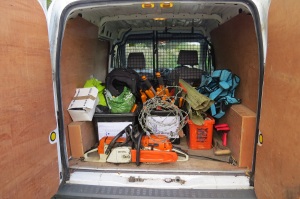Pesticides and soil biodiversity
A meta-analysis of nearly 400 research studies has shown that pesticides are damaging the soil’s vitally important ecosystems. Researchers have warned that we must be more careful about considering the organisms that live in the soil when we assess the environmental impact of pesticides. A UN report published in December 2020 found that, without urgent action to halt degradation, the future of our soils looks bleak: it takes thousands of years for new soils to form.

1 
2
[1] depleted soils are prone to erosion [2] healthy soils support germination
Soils are thought to contain nearly a quarter of all the planet’s biodiversity but the damage that pesticides can do to soil invertebrates gets a lot less coverage than the damage done to pollinators, mammals and birds. Invertebrates are an indispensable component of the system we think of as soil; they break down the detritus from which the soil is made, they redistribute its nutrients and develop its porosity and make it a fit place for plants to grow. Plants are the mechanisms that capture and store the sun’s energy.

3 
4
[3] large blue, which spends part of its larval stage underground [4] May bug larvae can spend years living in the soil
It’s not only the invertebrates that spend their whole lives in the soil that suffer from the use of pesticides: the larvae and pupae of many flying insects, including some butterfly species, live in the soil, and most of the world’s species of bees nest in the soil. And it’s not only one or two pesticides that are causing harm; research has shown that the effect is consistent across the whole class of chemical poisons. Fungicides are apparently almost as bad as insecticides for soil animals. This is not surprising as earthworms, woodlice, millipedes and springtails feed largely on fungi on decaying vegetable matter.

5 
6
[5] earthworm and [6] millipede, species that feed on plant material decayed by fungi in the soil
Europe Union regulations do demand that pesticides be tested on one species each of mite, springtail and earthworm, and on some microbial activity; tests on a woodlouse and symbiotic fungi are being considered for the future. This is horrifyingly little, especially as we begin to understand the role that mycorrhizal fungi play in a healthy ecosystem. In the US the picture is even worse; there the only organism pesticides are tested on are honey bees, which may never come into contact with the soil at all.
Science and international organisations move slowly; research has to be replicated, international law takes years to write and enact. In the meantime, we can begin by refusing to use pesticides, herbicides and fungicides in our homes and gardens, by asking retailers not to stock chemical poisons, the wider effect of which is not yet known. We can lobby our MPs and our local governments for urgent legislation.
The environmental crisis we are living through is moving a lot faster than the organisations that make the rules.






Composting the soil surface as in “no-dig” gardening is really helping soil activity,not only does it feed the soil but there is definitely more fungi and bacteria growth and this encourages creature activity to help plant growth.I was wondering if anyone has any other ideas on this subject? – regards Paul.
Making your own compost is always good, whichever way you do it. Compost bought from the garden centre has been sterilised to remove weed seeds and plant pathogens but the process also kills fungal spores, bacteria, invertebrate eggs, larvae and pupae – all necessary components of a healthy soil.
We have to think of soil as a process, like a digestive system or an internal combustion engine, a system in which something interactive is happening. If you remove part of a complex interactive system, it stops working.